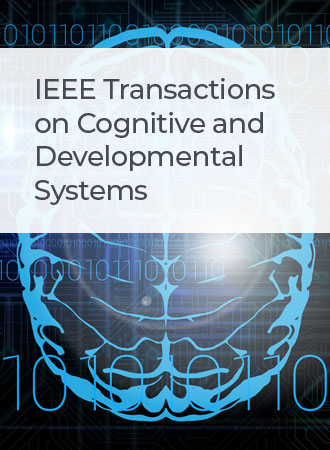Robust Perception-Based Visual Simultaneous Localization and Tracking in Dynamic Environments
IF 5
3区 计算机科学
Q1 COMPUTER SCIENCE, ARTIFICIAL INTELLIGENCE
IEEE Transactions on Cognitive and Developmental Systems
Pub Date : 2024-02-28
DOI:10.1109/TCDS.2024.3371073
引用次数: 0
Abstract
Visual simultaneous localization and mapping (SLAM) in dynamic scenes is a prerequisite for robot-related applications. Most of the existing SLAM algorithms mainly focus on dynamic object rejection, which makes part of the valuable information lost and prone to failure in complex environments. This article proposes a semantic visual SLAM system that incorporates rigid object tracking. A robust scene perception frame is designed, which gives autonomous robots the ability to perceive scenes similar to human cognition. Specifically, we propose a two-stage mask revision method to generate fine mask of the object. Based on the revised mask, we propose a semantic and geometric constraint (SAG) strategy, which provides a fast and robust way to perceive dynamic rigid objects. Then, the motion tracking of rigid objects is integrated into the SLAM pipeline, and a novel bundle adjustment is constructed to optimize camera localization and object six-degree of freedom (DoF) poses. Finally, the evaluation of the proposed algorithm is performed on publicly available KITTI dataset, Oxford Multimotion dataset, and real-world scenarios. The proposed algorithm achieves the comprehensive performance of动态环境中基于感知的稳健视觉同步定位与跟踪
动态场景中的视觉同步定位与映射(SLAM)是机器人相关应用的先决条件。现有的大多数 SLAM 算法主要集中在动态物体剔除上,这使得部分有价值的信息丢失,在复杂环境中容易失效。本文提出了一种结合刚性物体跟踪的语义视觉 SLAM 系统。我们设计了一个稳健的场景感知框架,使自主机器人具有与人类认知类似的场景感知能力。具体来说,我们提出了一种两阶段遮罩修正方法,以生成物体的精细遮罩。基于修正后的遮罩,我们提出了一种语义和几何约束(SAG)策略,为感知动态刚性物体提供了一种快速而稳健的方法。然后,将刚性物体的运动跟踪集成到 SLAM 管道中,并构建了一种新颖的捆绑调整,以优化相机定位和物体的六自由度 (DoF) 位置。最后,在公开的 KITTI 数据集、牛津 Multimotion 数据集和实际场景中对所提出的算法进行了评估。在 KITTI 数据集中,所提算法实现了每帧小于 0.07 米、每帧约 0.03 美元{}^{\circ}$的综合性能。实验结果表明,与最先进的 SLAM 算法相比,所提出的算法能够在具有挑战性的动态场景中实现精确定位和稳健跟踪。
本文章由计算机程序翻译,如有差异,请以英文原文为准。
求助全文
约1分钟内获得全文
求助全文
来源期刊

IEEE Transactions on Cognitive and Developmental Systems
Computer Science-Software
CiteScore
7.20
自引率
10.00%
发文量
170
期刊介绍:
The IEEE Transactions on Cognitive and Developmental Systems (TCDS) focuses on advances in the study of development and cognition in natural (humans, animals) and artificial (robots, agents) systems. It welcomes contributions from multiple related disciplines including cognitive systems, cognitive robotics, developmental and epigenetic robotics, autonomous and evolutionary robotics, social structures, multi-agent and artificial life systems, computational neuroscience, and developmental psychology. Articles on theoretical, computational, application-oriented, and experimental studies as well as reviews in these areas are considered.
 求助内容:
求助内容: 应助结果提醒方式:
应助结果提醒方式:


